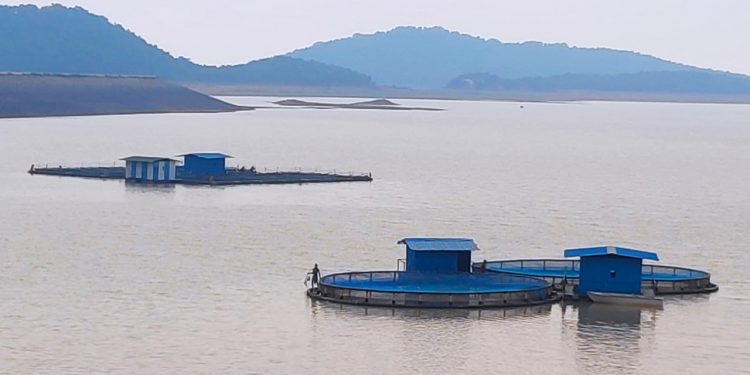Bhubaneswar: The state government has decided to promote cage culture in Hirakud water reservoir in a bid to attain self-sufficiency in fish production.
The directorate of fisheries has invited tenders from private firms and entrepreneurs for taking up reservoir cage culture in Hirakud dam on lease-install-operate basis.
Demand and consumption of freshwater fish such as Indian major carps and other varieties is increasing by the day in the state. During 2018-19, the state had produced about 5.08 lakh tonne freshwater fish. However, the state is still importing around 40,000 tonne fish from neighbouring states every year to cater to the demand.
Till now, freshwater fish production is being taken up in large ponds. However, this method of pond-based aquaculture is fraught with limitations. There are often conflicting cross-sectoral demands for water and land, increasing land prices, huge capital investment required to dig ponds and maintaining the related infrastructure. Therefore, the government has decided to promote cage culture in the reservoirs so that no big capital investment is required, source said.
The state has 138 reservoirs with water spread area of nearly 1.4 lakh hectare, which are under-utilised from fish production perspective. These reservoirs can be used for optimal fish production by adopting advanced fish farming techniques like cage culture.
In order to increase the freshwater fish production, the state government has come out with a new policy to promote cage culture in medium and large reservoirs of the state. Utilising a modest fraction (1%) of the surface area, the large and medium reservoirs can contribute a substantial quantity of fish to the total inland fish production basket of Odisha.
Besides, cage culture fisheries have a huge potential for increasing fish production. It is often considered as the future of reservoir fisheries demand of the state and also promote entrepreneurship in aquaculture and create job opportunities, the sources said.
The cages are enclosed spaces to rear fish in an enclosed area with net walls, except for leaving an opening at the top for feeding and handling the fish rectangular and are equally good from the production point of view. Their choice is mainly based on consideration availability of materials, convenience in assembling and transporting the components. In the first phase, cage culture will be promoted in five zones and 100 subzones of Hirakud reservoir which can be leased out to primary fishery cooperative societies entrepreneurs or companies.
Each subzone can accommodate a maximum of 24 rectangular cages of 6m length x 4m width x 4m depth dimension or 3 circular cages of 16m diameter which can help harvest around 3,000 kg of fish.
Various fish species like Catla (Bhakura), Rohu (Ruhi), Asian Seabass (Barramundi), pearl spot, butter catfish etc will be allowed to be cage cultured at the reservoir.







































